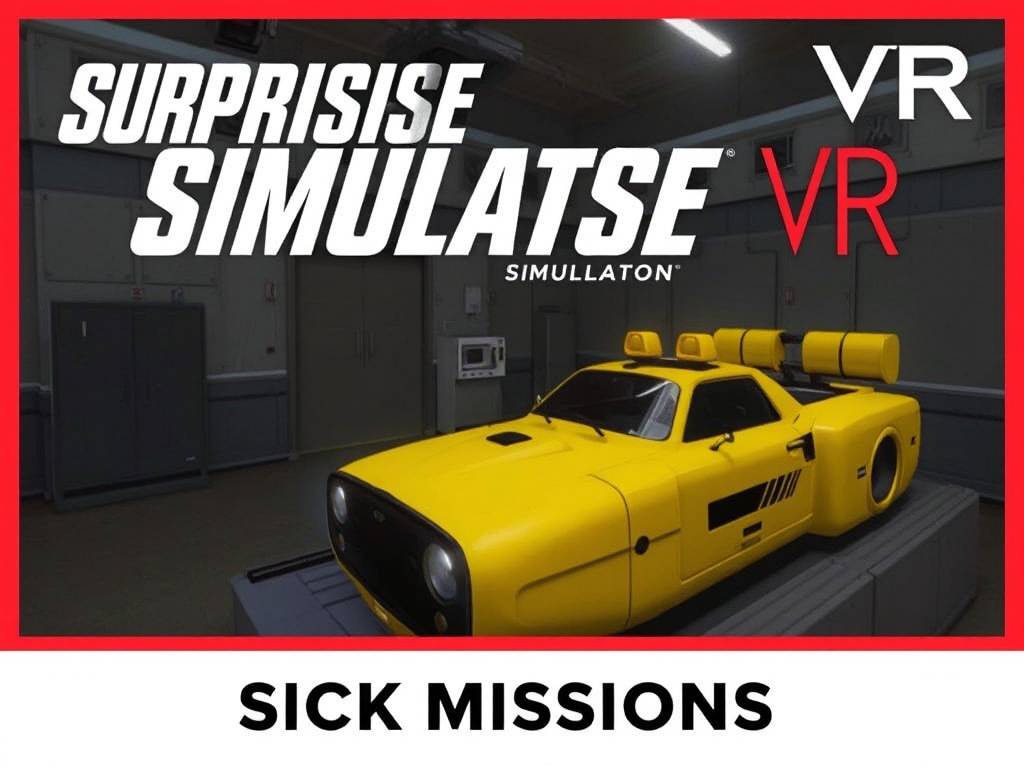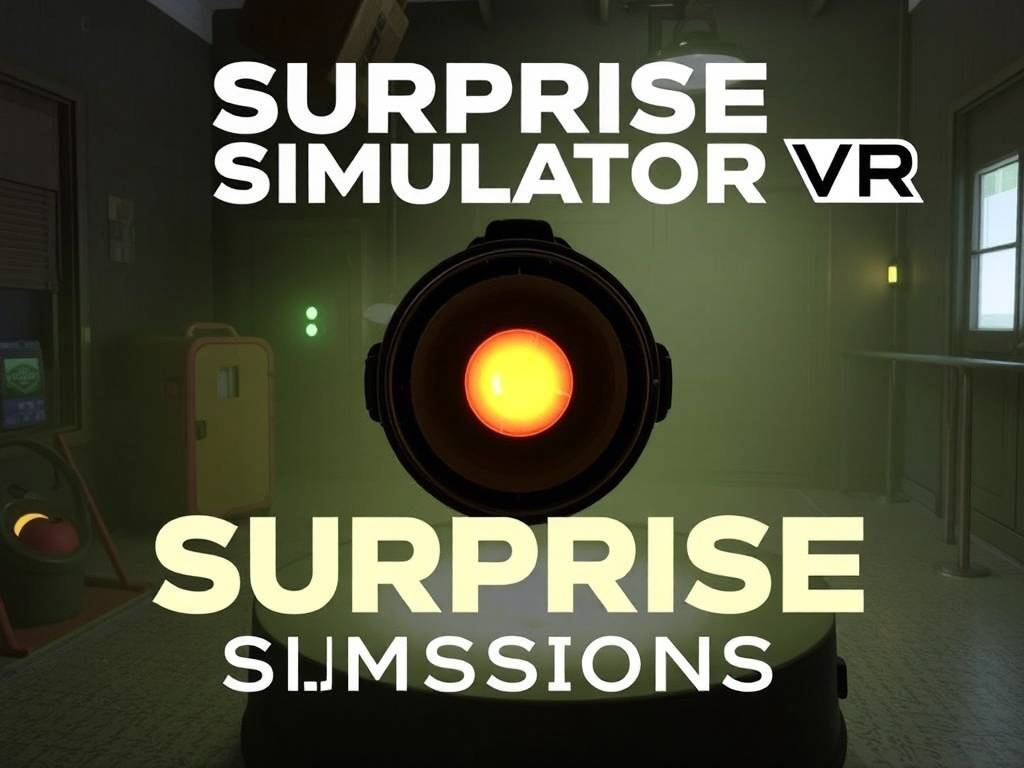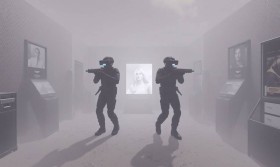Beyond the Edge of Fear: A Deep Dive into Surprise Simulator VR's "Shock Missions" DLC
The virtual reality landscape is perpetually evolving, pushing beyond the boundaries of entertainment into the realms of intense experience and emotional conditioning. For years, Surprise Simulator VR has stood as a pioneer in this niche, offering users a controlled environment to confront and desensitize themselves to life's unexpected jolts—from a friend jumping from behind a door to the startling ring of an untimely phone call. It was a tool for the anxious, a playground for the thrill-seeker. But with its latest expansion, "Shock Missions," the developers at NeuroStrain Studios have done more than just add content; they have fundamentally redefined the purpose of their simulation. This DLC is not about managing surprise; it's about mastering sheer, unadulterated terror.
Gone are the relatively benign scenarios of the base game. Upon loading the "Shock Missions" DLC, players are greeted with a stark, new interface labeled the "Aversive Response Calibration Suite." The premise is simple, yet chilling: you are a test subject for a high-stakes training program, and your objective is to survive a series of missions where the element of surprise is not a feature, but the core mechanic. This is no longer a self-help tool; it's a psychological endurance test.
The Anatomy of a Shock Mission
The DLC introduces five distinct mission categories, each designed to target a different primal fear. The genius of "Shock Missions" lies in its unpredictability. While the base game allowed players to roughly anticipate the nature of a surprise (a visual jump-scare, an auditory blast), the DLC seamlessly blends multiple fear factors.

- Acoustic Assault: These missions plunge players into near-total darkness, where sound is both the enemy and the only guide. The sudden, deafening crash of metal, the distorted whisper that seems to come from directly behind you, or the escalating, erratic heartbeat that isn't your own—these are the tools of terror here. The VR audio spatialization is impeccable, making the experience unnervingly realistic.
- Tactile Trepidation: Leveraging haptic feedback technology to its极限, these scenarios introduce physical sensations. A mission might have you carefully defusing a device, only for a sudden, sharp vibration to mimic the feeling of a wire snapping under your finger. Another might simulate the brush of an unseen creature against your virtual leg, using precise haptics to sell the illusion completely.
- Environmental Instability: This category plays with the very fabric of the virtual world. Floors can give way without warning, corridors can shift and reconfigure in an instant, and perspectives can warp dizzyingly. It targets the fear of losing control over one's environment, creating a profound sense of vertigo and disorientation that is unique to the VR medium.
- Cognitive Dissonance: Perhaps the most psychologically sophisticated of the missions, these tasks present players with paradoxical or impossible situations. You might be instructed to "locate the silent alarm," or navigate a room where the laws of physics subtly break down. The shock comes not from a loud noise, but from the brain's frantic struggle to process conflicting information.
- The Compound Shock: The ultimate test, these missions are procedurally generated amalgamations of all the above. You might be navigating an unstable environment during an acoustic assault, with tactile feedback complicating every move. There is no memorizing patterns here; survival depends on raw nerve and adaptability.
Beyond Jump-Scares: The "Adaptive Fear" AI
The true star of the "Shock Missions" DLC is not any single monster or scripted event, but the sophisticated Adaptive Fear AI that powers it. The system continuously monitors the player's biometric data—through optional peripheral support for heart rate monitors—and in-game behavior. It analyzes what you hesitate to approach, which sounds make you flinch the hardest, and how long it takes you to recover from a shock.
This data is then used in real-time to tailor the experience. If the AI detects that you have a particular aversion to sudden noises in enclosed spaces, it will craft a scenario that preys on that specific vulnerability. This ensures that the horror remains personal and potent, preventing players from simply "getting used to it." The AI's goal is to keep you perpetually on the edge of your comfort zone, making each mission a unique and deeply personal trial.

A New Purpose: From Therapy to Training
The introduction of "Shock Missions" sparks a fascinating debate about the application of VR technology. The base game positioned itself as a form of exposure therapy. The DLC, however, feels more like specialized training for high-stress professions. The focus on maintaining composure, following complex procedures under duress, and overcoming sensory overload has clear parallels to fields like bomb disposal, special operations, or emergency response.
NeuroStrain Studios has even hinted at partnerships with certain organizations for "controlled stress inoculation programs." This shift reframes the Surprise Simulator VR platform from a consumer entertainment product into a potent simulation tool with serious real-world implications. It asks the question: can we, and should we, use virtual horror to forge stronger, more resilient minds?
Conclusion: A Harrowing, Essential Expansion
The "Shock Missions" DLC is not for the faint of heart. It is a brutal, demanding, and often deeply unsettling experience that pushes the limits of what VR can evoke. It moves far beyond the simple jump-scare formula into a realm of sophisticated psychological horror. While it may alienate some players who enjoyed the more therapeutic nature of the base game, it represents a monumental leap forward for the title.
For those seeking the ultimate test of their nerve, "Shock Missions" delivers an unparalleled adrenaline rush. Its adaptive AI and multi-sensory approach to fear create a truly next-generation horror experience that is as intelligent as it is intense. More than just a DLC, it is a statement—a bold exploration of fear, control, and the untapped potential of virtual reality as a crucible for the human psyche.


















